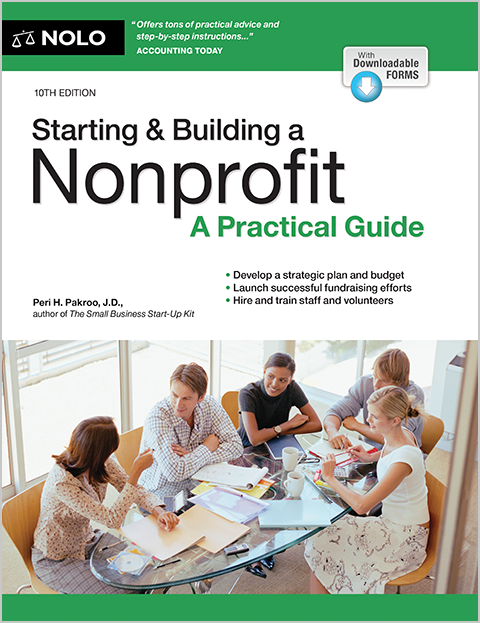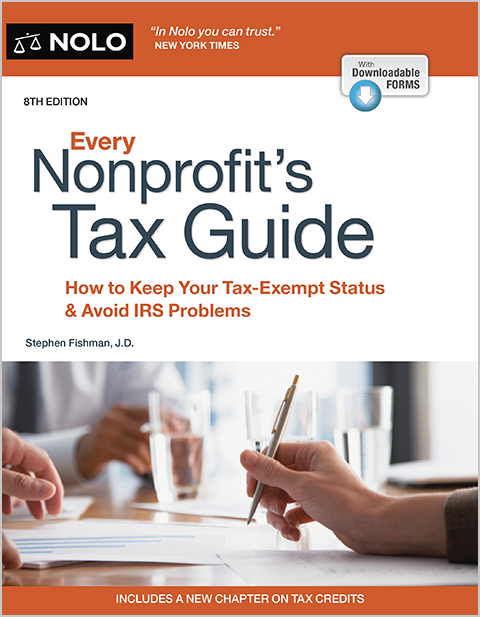Nonprofits of all sizes can raise money through selling goods and services.
Whether at garage sales, bake sales, car washes, book fairs, or elsewhere, most Americans old enough to have a piggy bank have either bought or sold something on behalf of a charitable organization or nonprofit. Selling goods and services is particularly valuable for small nonprofits such as schools and churches, in order to attract support from outside their membership.
Let's look at both the practicalities and the legalities of selling goods.
Nonprofits Can Legally Sell Goods and Make a Profit
It's perfectly legal for a nonprofit group to sell goods at a profit; even an exorbitant profit, if you can get buyers to go for it. The only limitations are the IRS requirement of 501(c)(3) groups that their sales activities not take over the purpose of the organization and your nonprofit's willingness to pay some taxes on the profit (only under certain circumstances). For details, see Tax Concerns When Your Nonprofit Corporation Earns Money.
It gets a little more complicated if you introduce a game of chance, such as a raffle or rubber duck race, into the scenario. You'll need to check your state's law on whether such games are legal, and if so, whether the nonprofit needs to get a permit before proceeding. (See Special IRS Gambling Rules for Nonprofits.)
Will Goods Your Nonprofit Sells Actually Make a Profit?
To predict whether your sales plan will work, figure out your likely:
- Upfront and fixed costs. These are amounts you'll have to pay regardless of how much you produce or sell, such as a hall or booth rental, and basic supplies such as a sign, cash box, and other equipment.
- Variable costs. This means how much each item will additionally cost to buy or make. For example, if you'll be selling baked goods, you might need to add up the costs of ingredients and ribbons for wrapping them up nicely.
- Price. Settle on a price that covers your variable costs plus a cushion—limited by how much people will be willing to pay. (Of course, if you're following the dictates of a catalog vendor, you'll be told what price to charge.)
Also pay attention to whether you have the infrastructure to handle such an effort, such as:
- A large corps of volunteers. For example, if you've got 100 students in your high school band, and ask each one to sell 10 raffle tickets at $10 each, that's a relatively straightforward way to bring in $1,000.
- Space. For events such as garage sales, a large storage space and a good, easily seen and accessed area (such as a playground or auditorium) in which to hold the sale.
- A network of experts or generous local businesses. Connections to experts who will create or donate certain goods, provide services, or market or perform other business functions.
Organize and Motivate Your Sales Force
No matter how great your items to be sold might be, you've got to have someone doing the selling, or showing up to wash the cars, sit in the booth, and so on. A group training can be a good start, where you cover the following important issues.
- How to approach buyers, reminding them that the sales support your cause, and giving them a brief pitch about what that cause is.
- Basic rules and best practices regarding making change, what forms of payment can be accepted, how to provide receipts, and, if you'll be sending out a bunch of people to sell individually, how best to collect money and transfer it back to your group without losing it along the way.
- What's in it for the volunteer salespeople. For example, you might invite them to a celebratory party, or give prizes to whoever sells the most.
Publicize and Advertise
Many nonprofits' sales efforts fall down when it comes to marketing. It's easy to think, "Everyone will sell some to their friends!" But will they really follow through? Ask questions ahead of time, and get actual commitments as well as estimates of numbers.
Then try to build some buzz around your sale, with signs, advertising, and email notifications. When drafting emails, do so with the idea that your emails might—and hopefully will—be forwarded, to people's friends, relations, and so forth. Provide enough explanation of your group, and how sales of your product will help it, that even Grandma in Peoria will get enthused enough to buy.
Selling Goods From Companies That Cater to Nonprofits
A variety of companies seek to make the organizing process easier (and make a nice profit themselves) by having nonprofits sell candy, wrapping paper, popcorn, wreaths, gifts, tchotchkes, and so on, under their auspices.
In the words of one volunteer parent, "It can be such a game with these vendors, many of which make a ton of money off of nonprofits. A few seem downright exploitative, like one magazine company that pestered our buyers to renew their subscriptions until eternity, and sold their names to mail order companies. But I have to say, if you find the right kind of company, it solves a lot of problems for you—providing food that meets health code requirements, helping deal with tax rules, providing slick flyers and websites, and all-around making it easy to orchestrate the sales process."
Ask around to get recommendations on companies, choose a product that won't have people rolling their eyes, and look carefully at your profit percentage.



